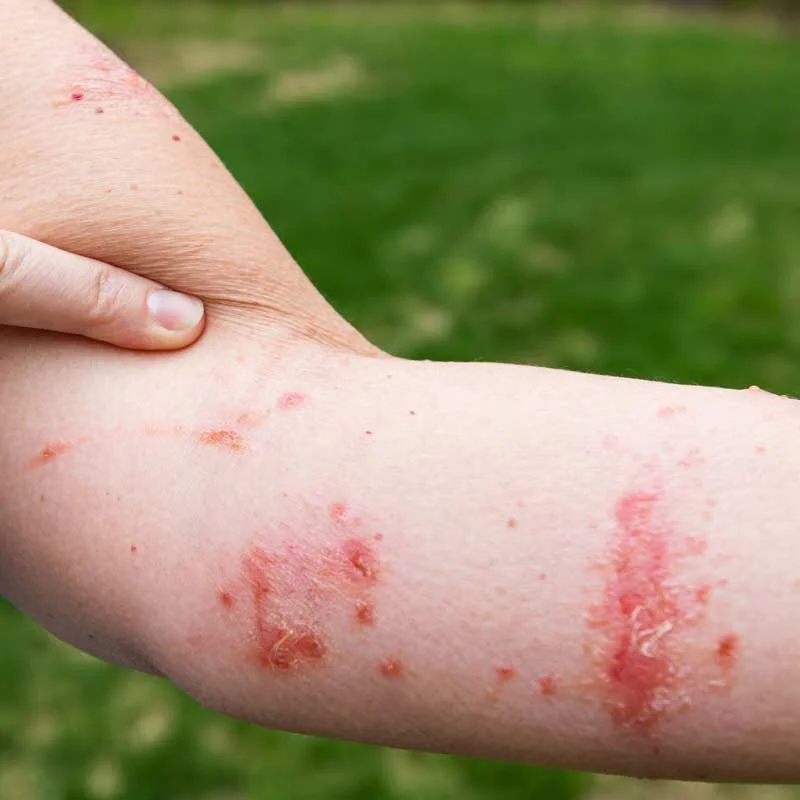
Poison Ivy, Poison oak & Poison Sumac
Poison ivy, poison oak, and poison sumac are plants that can cause a rash, itching, and other symptoms if their leaves come into contact with the skin. These plants contain a toxic oil called urushiol, which is responsible for the reaction that many people experience. It is important to be able to identify these plants, take steps to avoid them, and know how to treat the symptoms if you do come into contact with them.
Poison ivy is a climbing or trailing vine that is found in many parts of North America. It has leaves that are composed of three leaflets, which are typically green in the spring and summer and turn red or orange in the fall. Poison ivy can grow in a variety of habitats, including forests, fields, and along roadsides.
Poison oak is a shrub that is found in many parts of North America. Like poison ivy, it has leaves that are composed of three leaflets, which are typically green in the spring and summer and turn red or orange in the fall. Poison oak grows in wooded areas, along the edges of forests, and in other similar habitats.
Poison sumac is a shrub or small tree that is found primarily in swampy or wet areas of the eastern United States. It has leaves that are composed of seven to 13 leaflets, which are typically green in the spring and summer and turn orange or yellow in the fall.
If you come into contact with any of these plants, it is important to wash the affected area as soon as possible with soap and water. This will help to remove as much of the urushiol oil as possible and reduce the risk of a reaction. If you develop a rash, itching, or other symptoms, over-the-counter creams and antihistamines can help to relieve the symptoms. In severe cases, a doctor may prescribe a stronger medication.
To avoid exposure to these plants, it is important to be able to identify them and take steps to avoid them. This may include wearing protective clothing when hiking or working in areas where the plants are found, and avoiding contact with the plants. If you are going to be in an area where these plants are common, it is a good idea to carry a topical corticosteroid cream with you in case of exposure.
In addition to avoiding exposure to these plants, it is also important to be aware of other potential sources of urushiol. For example, urushiol can also be found in the smoke from burning poison ivy, poison oak, or poison sumac, and can cause a reaction if it comes into contact with the skin or is inhaled. Urushiol can also be found on gardening tools, pets, and clothing that has come into contact with these plants, so it is important to take steps to avoid exposure from these sources as well.
If you develop a rash or other symptoms after coming into contact with poison ivy, poison oak, or poison sumac, it is important to seek medical attention if necessary. In mild cases, over-the-counter creams and antihistamines may be enough to relieve the symptoms. In more severe cases, a doctor may prescribe a stronger medication, such as a corticosteroid cream or oral steroid. In severe cases, a doctor may also recommend a vaccine to prevent future reactions.

